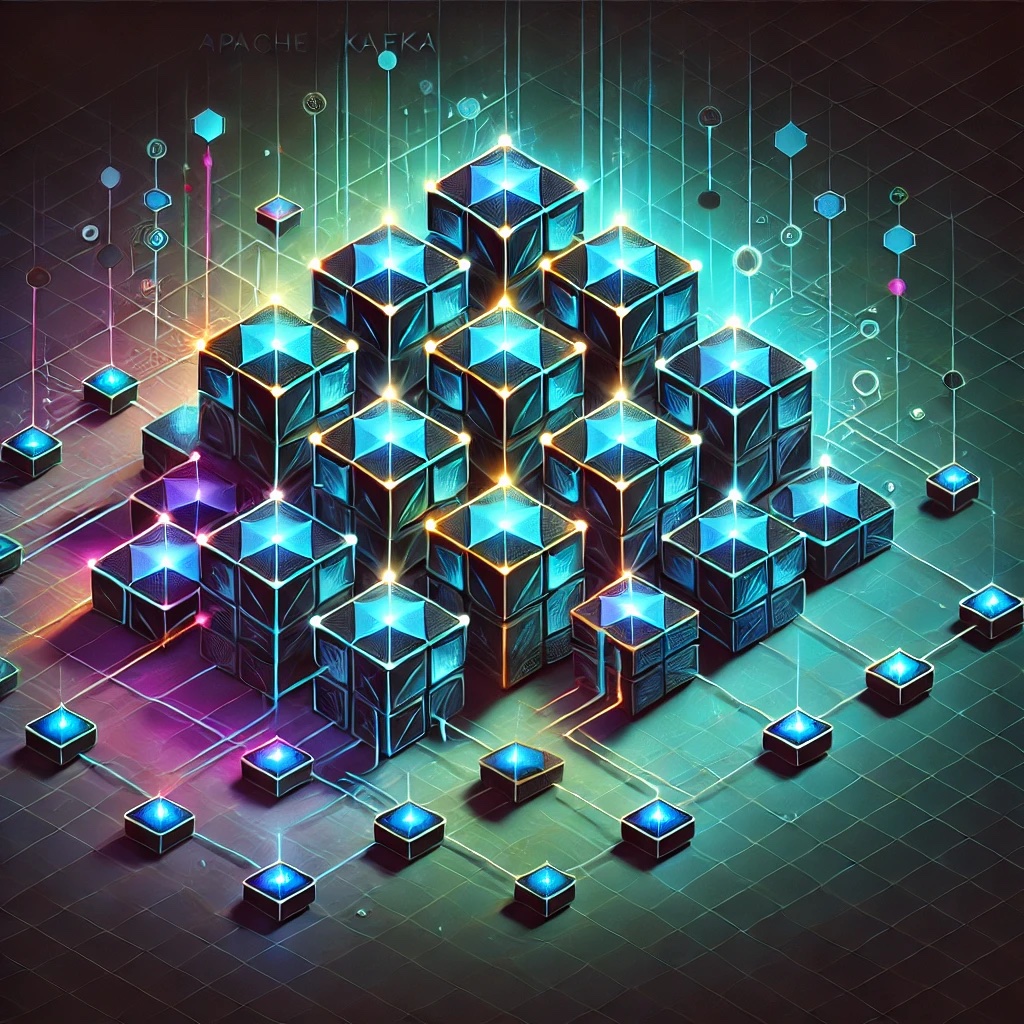Key Concepts in Kafka
Before delving into Kafka’s architecture, let’s understand the key concepts that form the foundation of Kafka:
1. Topics
A topic in Kafka is a logical channel through which data is written and read. It is similar to a table in a database, but with the distinction that it is meant for real-time streaming of messages. Topics in Kafka are partitioned, meaning the data within a topic is divided into multiple partitions, which makes Kafka scalable across multiple brokers.
2. Producers
Producers are entities that send or publish messages to a Kafka topic. These messages are sent in real-time, and Kafka can handle a large number of producers sending messages simultaneously. Producers control which partition they want to write to, either by specifying the partition or relying on Kafka’s partitioning logic based on the key of the message.
3. Consumers
Consumers are entities that read messages from Kafka topics. They subscribe to one or more topics and process the messages in the order they were received. Kafka provides features such as consumer groups, which allow multiple consumers to read data from the same topic in parallel, dividing the workload efficiently.
4. Brokers
A Kafka broker is a server that stores and serves Kafka topics. Brokers manage the storage of data and handle incoming and outgoing messages between producers and consumers. Kafka brokers can be scaled horizontally, meaning you can add more brokers to a Kafka cluster to increase the capacity of the system.
5. Partitions
Partitions are fundamental to Kafka’s design. Each topic can be divided into multiple partitions, and each partition is an ordered sequence of records. This partitioning allows Kafka to be distributed across a cluster of brokers, ensuring high availability and scalability. When consumers read data, they do so in the same order within a partition, ensuring consistent processing.
6. Offsets
In Kafka, each record within a partition has an offset. The offset is a unique identifier for each record in a partition. Consumers use offsets to keep track of where they left off reading, ensuring that they can resume from the correct point even after failures or restarts.
Kafka Architecture
Kafka’s architecture is built around the idea of distributed systems, where data is shared and processed across a network of servers, ensuring scalability, fault tolerance, and high availability. Here’s an overview of the core components of Kafka’s architecture:
1. Kafka Cluster
A Kafka cluster consists of multiple Kafka brokers working together to handle data storage, processing, and distribution. Each broker in the cluster is responsible for handling a portion of the data. The cluster ensures that data is replicated across multiple brokers to provide fault tolerance and redundancy.
2. ZooKeeper
Kafka relies on Apache ZooKeeper for managing and coordinating the Kafka brokers. ZooKeeper is responsible for leader election among brokers, maintaining configuration information, and tracking the status of brokers. In more recent versions of Kafka, there has been a shift towards eliminating the dependency on ZooKeeper in favor of a native Kafka controller that handles these tasks.
3. Producers and Consumers
As mentioned earlier, producers publish messages to Kafka topics, while consumers subscribe to these topics and process the messages. Producers and consumers are designed to be decoupled, meaning they can work independently of each other. Kafka ensures that messages are stored and delivered reliably, even if producers or consumers go offline temporarily.
4. Replication
Kafka ensures high availability through replication. Each partition of a topic is replicated across multiple brokers, with one broker acting as the leader for that partition and the others serving as replicas. If the leader broker goes down, one of the replicas is automatically promoted to leader, ensuring that the system remains operational.
Kafka Use Cases
Kafka’s distributed architecture and real-time processing capabilities make it ideal for a wide range of use cases. Here are some of the most common use cases for Kafka:
1. Real-Time Data Streaming
Kafka is widely used for real-time data streaming, where it ingests, processes, and forwards data as soon as it is generated. This is particularly useful in industries such as finance, retail, and telecommunications, where real-time data insights are critical for decision-making. Kafka can handle a massive volume of data streams and process them in near real-time.
2. Event Sourcing
Event sourcing is a design pattern where state changes in a system are captured as events and stored in Kafka topics. These events can be replayed or queried later to reconstruct the system’s state. Kafka’s ability to store and replay messages makes it an ideal fit for event sourcing architectures, especially in microservices and distributed systems.
3. Log Aggregation
Kafka is commonly used for log aggregation in large-scale systems. Instead of storing logs in traditional databases, Kafka collects and stores logs from various systems and services in a central location. These logs can then be processed, analyzed, and visualized in real-time, making it easier to detect anomalies and monitor system health.
4. Messaging Systems
Kafka can be used as a high-throughput, low-latency messaging system between various components of a distributed system. Unlike traditional messaging systems like RabbitMQ or ActiveMQ, Kafka is designed to scale horizontally and can handle millions of messages per second with minimal performance degradation.
5. Data Pipelines
Kafka is also used to build real-time data pipelines, where data flows between different systems and applications. These pipelines can ingest data from various sources, process it in real-time, and then send the processed data to different destinations like databases, data lakes, or analytics platforms. Kafka’s ability to handle high-throughput data streams makes it an essential tool for building scalable and reliable data pipelines.
Kafka vs. Traditional Messaging Systems
While Kafka shares some similarities with traditional messaging systems like RabbitMQ or ActiveMQ, there are significant differences that make Kafka a better fit for modern, large-scale data architectures:
1. Scalability
Kafka’s partition-based design allows it to scale horizontally across multiple brokers. This makes Kafka highly scalable, capable of handling millions of messages per second with ease. Traditional messaging systems often struggle with scalability at such a massive scale.
2. Message Retention
Kafka allows messages to be stored for a configurable period of time, even after they have been consumed. This is in contrast to traditional messaging systems, where messages are typically deleted once consumed. This feature allows Kafka to be used for event replay and long-term storage of data streams.
3. Fault Tolerance
Kafka’s replication mechanism ensures that messages are stored on multiple brokers, providing fault tolerance and high availability. In case a broker fails, Kafka can recover quickly without data loss. Traditional messaging systems may not provide the same level of fault tolerance, especially at large scales.
Kafka Streams and Kafka Connect
Kafka’s ecosystem includes two powerful tools that extend its capabilities:
1. Kafka Streams
Kafka Streams is a stream processing library that allows you to process and analyze data in real-time directly within your Kafka applications. It is fully integrated with Kafka and can process data as it is ingested into Kafka topics. Kafka Streams provides a high-level DSL (Domain-Specific Language) for defining complex stream processing logic, making it easier to build real-time analytics applications.
2. Kafka Connect
Kafka Connect is a framework that simplifies the process of integrating Kafka with external systems, such as databases, cloud services, and storage platforms. Kafka Connect provides pre-built connectors for popular systems, allowing you to easily ingest and export data to and from Kafka. This makes Kafka a crucial component of a modern data architecture, connecting various systems in a seamless and scalable manner.
Kafka’s Role in Modern Data Architectures
Kafka is often referred to as the “central nervous system” of modern data architectures. It acts as the core component for real-time data streaming and processing, providing a unified platform for collecting, processing, and distributing data across different systems and applications.
In modern microservices-based architectures, Kafka plays a crucial role in decoupling services and ensuring that data is shared between different services in real-time. Kafka’s ability to handle large-scale, distributed data flows makes it a key component in building scalable, fault-tolerant, and real-time data-driven applications.
Conclusion
Apache Kafka has emerged as a critical technology for real-time data streaming, event processing, and building scalable, distributed systems. With its fault-tolerant architecture, high throughput, and ability to scale horizontally, Kafka is used by organizations across various industries to handle massive amounts of data in real-time.
Whether you are building real-time analytics, event-driven microservices, or data pipelines, Kafka provides the foundation to handle complex, high-volume data streams efficiently. As Kafka continues to evolve, it remains at the forefront of the data streaming ecosystem, empowering organizations to harness the power of real-time data to drive innovation and growth.




